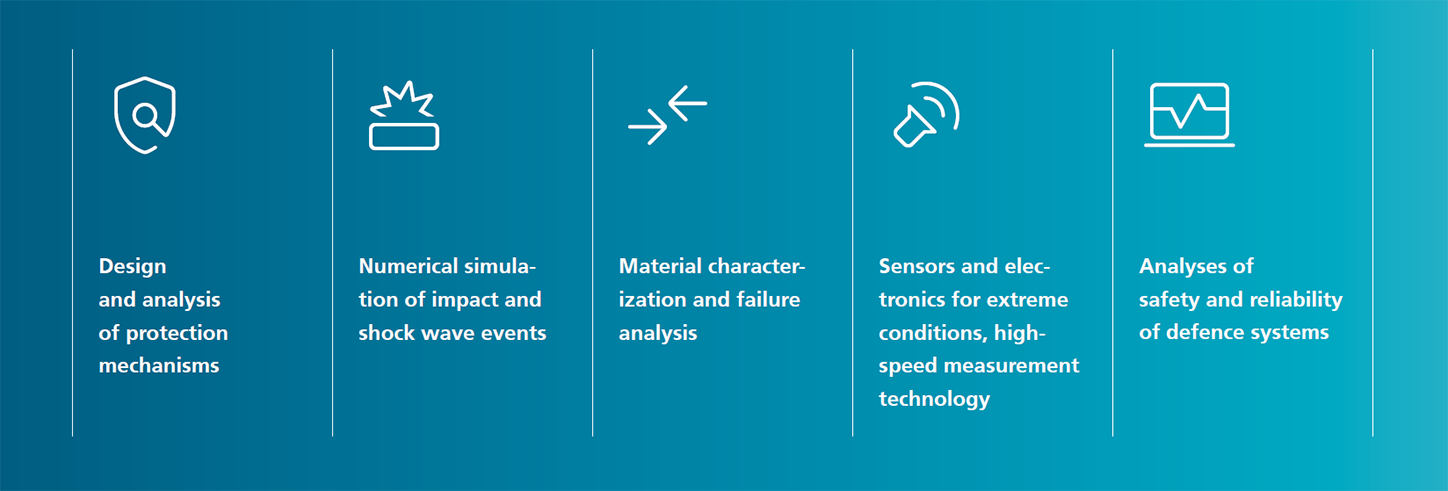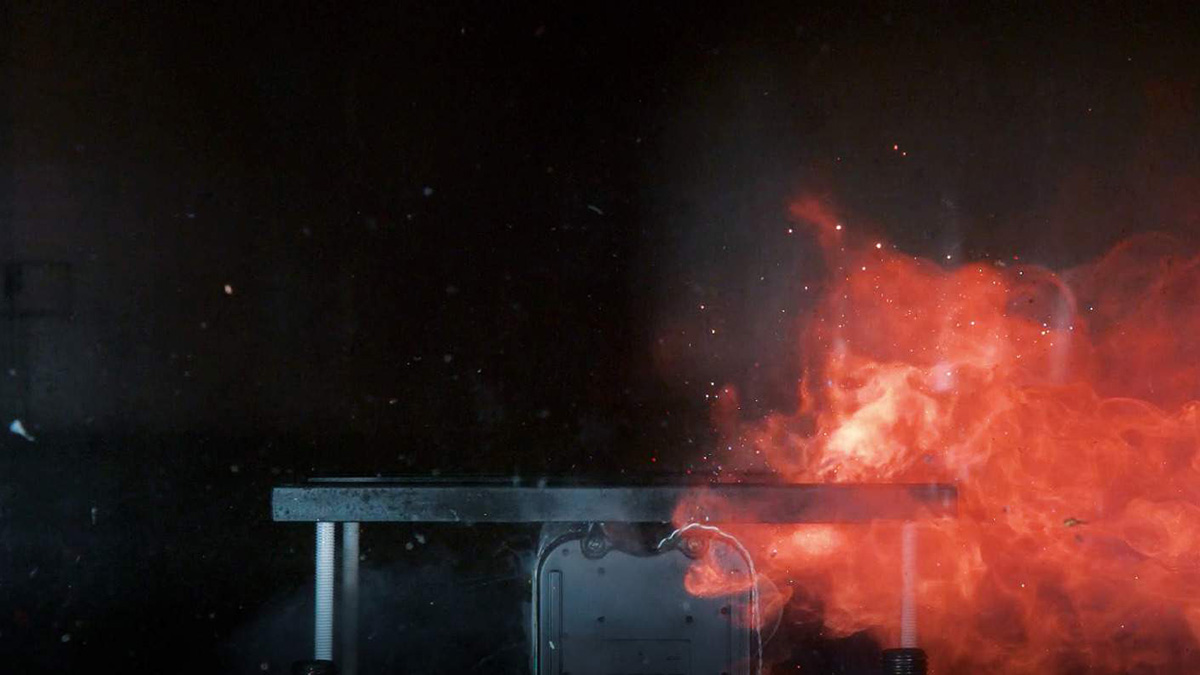The business unit Defense focusses on the areas of protection and effectiveness. Modern protection concepts and new materials are analyzed with regard to high-dynamic loading, sensor systems are developed for their application in ballistics as well as practice-oriented engineering software. Furthermore, analyses concerning the technical safety and reliability of defense-related technology systems are included in our portfolio.
For experimental investigations, acceleration facilities for a large parameter range concerning masses and velocities are available which enable the investigation of terminal ballistic mechanisms on impact. Laser effects can also be investigated in this context. For the investigation of detonations under laboratory conditions, EMI features various laboratories, some of them equipped with unique measurement technology. Imaging techniques such as flash X-ray and high-speed cameras are used. For special requirements, high-speed measurement methods and sensor technology are adapted or autonomously developed.
The theoretical analysis of impact and shock-wave processes is based on numerical simulation. The simulations, conducted in the in-house computer cluster, are computed using material models which are created at the institute. At EMI, the characteristic values are measured under high-dynamic loading conditions. This additionally forms the basis for engineering software developed for practical usage under realistic conditions.
The methods described are available for experimental and simulation-based analyses for the development of new technologies for the army, air force and navy.
For automotive protection, the effects of shoulder weapons, mines and improvised explosive devices are analyzed, and new approaches for defense against threats are developed. For protection against small-caliber threats, transparent armor systems for viewing panels as well as personal protective equipment are optimized. Methods known from the field of protective structures are used for the protection of camps.
The experimental illustration of mechanical material load under realistic, operation-oriented conditions is deployed, for example, to analyze the vulnerability of airplane components or to evaluate the combination of materials regarding their ballistic protection performance. On this basis, EMI develops new concepts for optimized armored structures.


